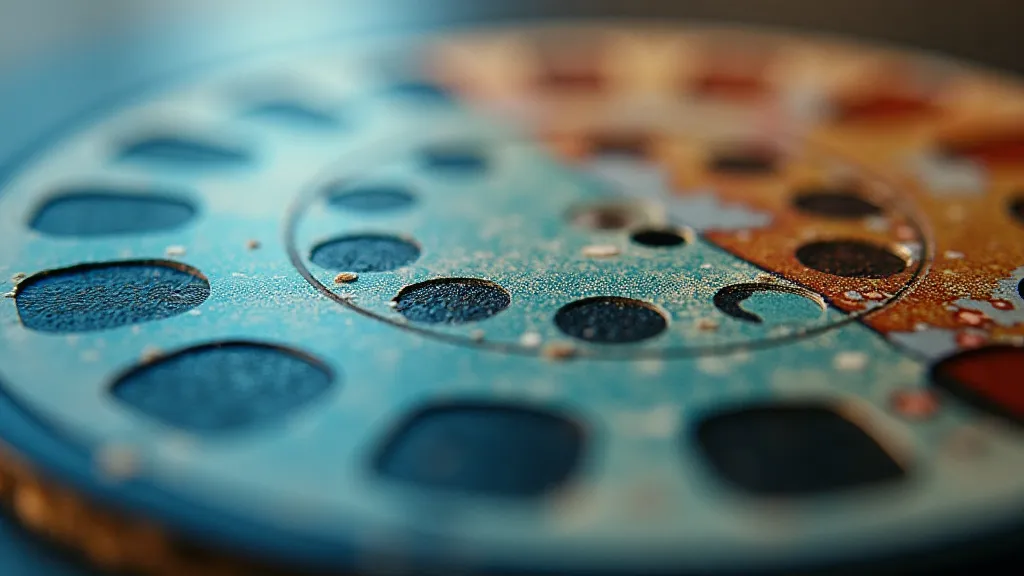Ghost Images: Understanding and Addressing Fading on View-Master Slides
There’s something profoundly evocative about a View-Master reel. Held in your hand, it’s a portal to a lost world, a miniature window displaying scenes of long-gone amusement parks, exotic locales, or the wonder of a 1950s space exploration. But even the most meticulously cared-for reels eventually succumb to the relentless march of time. Fading, a frustrating and heartbreaking consequence of aging photographic materials, often diminishes these vibrant memories to ghostly echoes – faint outlines where color and detail once thrived.
My grandfather, a quiet man of few words, was a View-Master enthusiast. He collected them steadily throughout his life, accumulating a substantial library of reels chronicling the rise of Disneyland, the majesty of the Grand Canyon, and the charm of European cities. I remember, as a young boy, sitting on the floor of his study, captivated by the spinning disk and the seemingly magical shifts in scenery. He's gone now, but his collection remains – a tangible link to a cherished past. Recently, I unearthed a reel depicting the 1964-65 New York World's Fair. The colors were noticeably muted, the vibrant hues of the Pavilion of Tomorrow reduced to a washed-out pallor. It was a poignant reminder of time’s erosive power.

The Chemistry of Fading: Why View-Master Reels Fade
The fading we observe in View-Master reels isn’s a simple process; it's a complex interplay of chemistry, light exposure, and environmental factors. The majority of early View-Master reels utilized a process known as dye coupling, a relatively inexpensive method for producing color photographs. This technique involves layered dyes that react to form the final image. The problem is, these dyes, particularly the cyan and magenta dyes, are inherently unstable. They are susceptible to photochemical degradation when exposed to light, heat, and oxygen. Over time, this degradation causes the dyes to break down, leading to a gradual loss of color.
Furthermore, the base material itself – typically a nitrocellulose or cellulose acetate film – can contribute to the problem. Nitrocellulose, while offering excellent clarity, is notoriously prone to brittleness and “vinegar syndrome,” a chemical breakdown that releases acetic acid, further accelerating degradation. Cellulose acetate is more stable, but it too can degrade, albeit at a slower rate.
The storage environment plays a crucial role. Reels stored in direct sunlight or in areas with fluctuating temperatures and humidity will fade much faster than those kept in stable, dark, and cool conditions. The simple act of repeatedly viewing a reel can also contribute to fading, as each exposure to light initiates another cycle of chemical breakdown.
Mitigating Further Deterioration: Preservation Strategies
While reversing the fading process is largely impossible (short of expensive, and often damaging, photographic restoration techniques), we *can* take steps to slow down the rate of deterioration and preserve what remains of these valuable historical documents. The key is proactive prevention and careful handling.
Storage is Paramount: The single most important thing you can do is store your View-Master reels in a dark, cool, and stable environment. An archival-quality box, ideally made of acid-free materials, is essential. Temperature and humidity should be kept as consistent as possible. Basements and attics are generally unsuitable due to their fluctuating conditions. A closet in a climate-controlled room is a much better option.
Handle with Care: Minimize handling. When you *do* handle a reel, do so with clean, dry hands, or better yet, wear cotton gloves. Avoid touching the photographic emulsion. Never attempt to clean the reels with harsh chemicals or abrasive materials. This will only exacerbate the damage.
Digitization: A Long-Term Solution: While it doesn't preserve the original reel, digitization offers a valuable backup. Using a View-Master digitization adapter (or a carefully constructed DIY setup), you can create digital images of your reels, ensuring that the scenes are captured even if the physical reels continue to fade. Store these digital images in multiple locations – a hard drive, a cloud service, and a backup drive – to protect against data loss.
Archival Sleeves: Investing in archival-quality sleeves can provide an extra layer of protection against dust, scratches, and handling damage. These sleeves are typically made of inert polypropylene or polyester film and are designed to not interact with the photographic emulsion.
Understanding the Craft: A Glimpse into View-Master Production
Consider the sheer ingenuity and craftsmanship that went into the creation of these miniature wonderlands. Early View-Master reels were entirely hand-painted, a laborious process requiring immense skill and precision. Imagine the artist painstakingly rendering each detail, relying solely on their artistic talent and a limited palette of colors. As production scaled up, photographic processes were incorporated, but even then, significant manual intervention was often required. The images were carefully selected, retouched, and then transferred onto the photographic film. Each reel represented a significant investment of time and effort – a testament to the enduring appeal of visual storytelling.

Acceptance and Appreciation: Cherishing the Ghosts
Ultimately, the fading of View-Master reels is an inevitable consequence of time. We cannot completely prevent it, but we can strive to slow it down and to appreciate the history and artistry that these reels represent. The ghostly images that remain – the faint outlines, the muted colors – serve as poignant reminders of a bygone era. They whisper stories of adventure, discovery, and the enduring power of visual memory. It’s about accepting the passage of time and cherishing the fragments of the past that remain, understanding that even faded, they retain a profound and irreplaceable beauty.
My grandfather’s collection is more than just a pile of old reels; it's a tangible link to my family history, a window into a world that no longer exists. And even with the fading, the magic remains – a testament to the enduring appeal of these miniature marvels.






